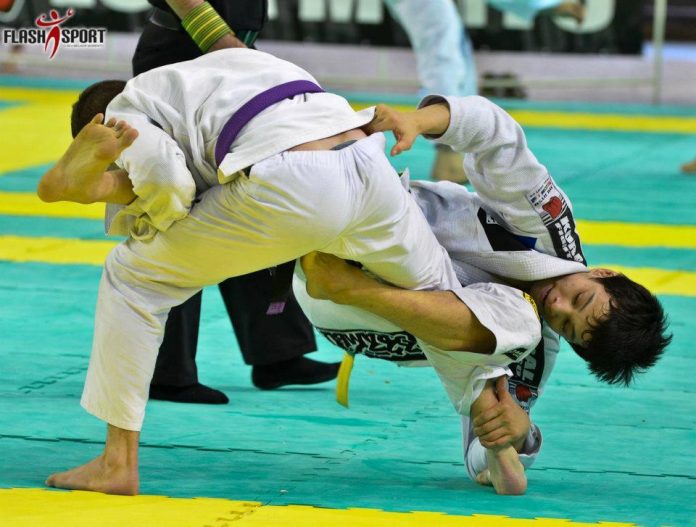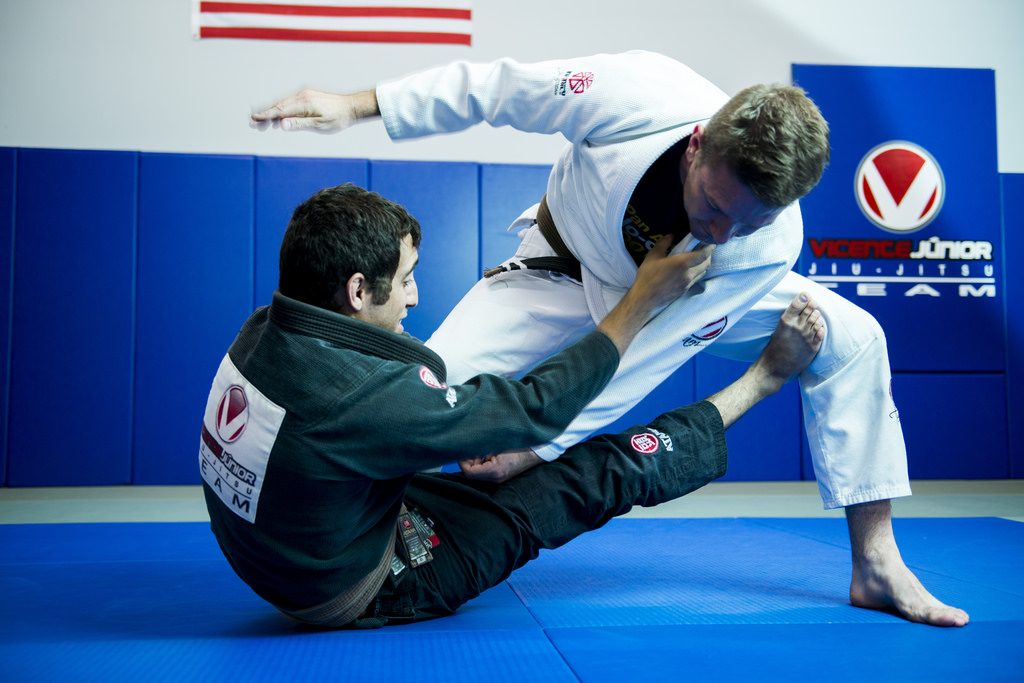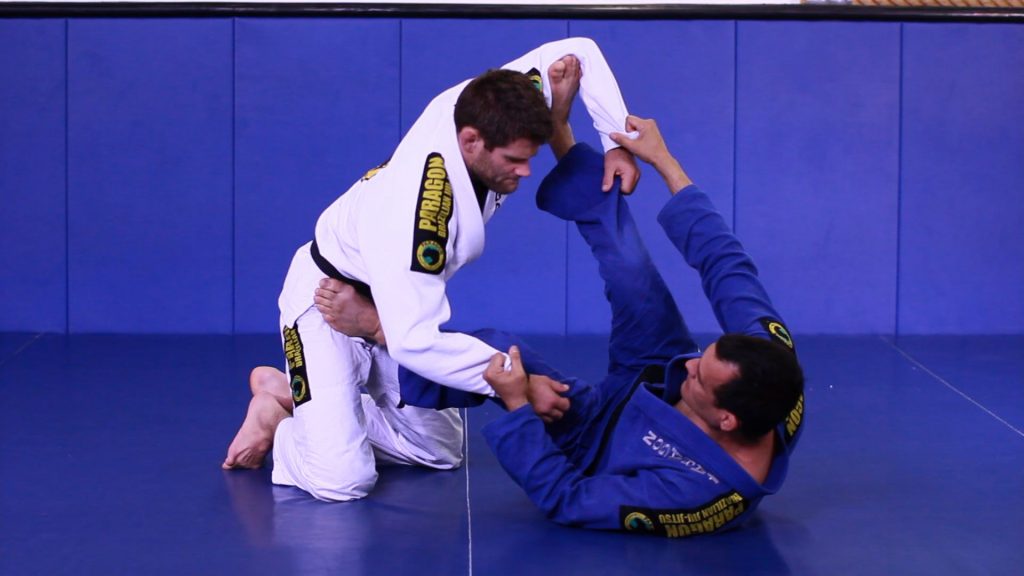
The open guard is arguably the most varied position in Brazilian Jiu-Jitsu. People experiment with bottom side attacks way more than with every other position. This is due to the security that the closed guard provides.
Even though, for absolute beginners, the closed guard can be a very secure position. They might not be able to attack from there, but a strong athletic grappler can be very hard to pass nonetheless. As their BJJ game develops, people tend to open up more and leave the security of the closed guard. However, once they fail at something, the instinct is to get back to the preferred position. Since the closed guard is quite difficult to get back into, people look for the next best thing – the open guard. It doesn’t take long for them to see how effective this new position can really be.
Make Sure you Check Out the best Concept Video of an Open Guard Retention HERE.
The thing with the open guard is that it is as diverse as BJJ techniques get. There are countless variations, some universal, some applicable only in GI. Along with every variation comes a change in effectiveness. However, there’s a way to make every open guard variation work for you, even if it’s not your preferred one. It just takes a different approach to things. However, now that you moved past the closed guard, you’re probably ready to understand how BJJ concepts work.
A Different Open Guard Approach
Open guards are the result of countless of hours of experimentation going on simultaneously around the world. On one side Keenan is working on some lapel based animal guard. On the other side of the globe, Kit dale is looking at different ways to attack. Eddie Bravo is all about No-Gi variations to surprise even the most skilled opponents. This makes staying on top of every open guard variation extremely difficult. From a technical standpoint, all open guards have unique nuances specific to them. Hardly anyone could know them all. That said, you could still use every open guard variation with ease just by understanding their basic configuration.
When concepts come into play, your Jiu-JItsu game is going to change significantly. Suddenly, it’s not about the move or even a follow-up move. It’s about looking to understand why a move does what it does. As you master concepts, you’ll be one step closer to mastering Jiu-Jitsu as well.
Basically, no matter the variation, some elements remain universal. Concepts help to identify the moving parts of a technique and look to apply that knowledge in the right way. The result is an instant advantage even when in situations that are completely new. Look at it this way – with a conceptual approach to BJJ, you’ll never be in a scramble again. In terms of the open guard, nobody is going to be able to pass your guard.
Four Rules Of Control
Brazilian Jiu-Jitsu, as most grappling martial arts, is all about control. When we’re fighting from the bottom, ou opponent has gravity working for them, so control becomes even more important. The more control you have over n opponent the less they can move. the less an opponent can move at will, the more of your game you can apply. It is simple, yet brutally effective. So let’s look at what control actually is and what are its main parameters.
-
Grips
Every good guard position starts with grips. the better your grips are, the more effective you’re going to be off the ground. When on the bottom the best thing to do is win the battle for grips. In most open guard cases this means getting superior grips on your opponent’s arms. It might be on the sleeves, wrists or along the upper arm. As you go into more varied open guards, you’ll discover that this also stands true for pants grips.
Normally, there are also combinations with one hand on the pants and the other on a sleeve. As good as collar grips can be when on the bottom, try to focus on the hands. An opponent can’t pass when they can’t control you. Since their legs have to on the ground in order to move, all they have are their arms. So always look to take them away when you’re playing open guard.
-
Foot Position
Foot position is the second most important point of control from an open guard. Your feet have a twofold role in playing the open guard. the are adjustable frames, that create constant distance with your opponent. As you’ll see later on, distance means space, and space is crucial to avoid pressure passing. Secondly, your feet are levers that help you control your partner. As a point to remember, always look to place your feet at a joint. If you analyze most open guards you’ll see that a foot or both is always at the hip, knee, elbow, shoulder or another joint. This delivers both control and options to disrupt the balance in order to attack.
-
Understanding Leverage
When you’re on the ground and you have your grips and feet all ready to go, you need to understand how to use them. Once you have the advantage of control there’s not much you can do just by staying there. In order to sweep or submit an opponent. you’ll have to create openings. The system of control you have means you can leverage your opponent into moving in the desired direction. For example, a grip combination of sleeve and pants, along with a push on the hips with the other leg results in a tripod sweep from the basic open guard. Another example is setting up a triangle from spider guard. Use the leverage the feet provide in combination with the control from the grips. That’s how you’ll create attacking openings.
-
Dynamic Control
Finally, you have to be ready for anything. The control means that you have a safe checkpoint but it is not the end game. From there you could either attack, using leverage or defend your position. When you defend your position remember that being on the bottom is very different from the top game. You have no weight advantage over your opponent so you can’t just sit still. As your opponent changes angels looking to pass or regain control, you must adjust. That means switching between different means of grips and foot positioning in order to stay ahead. When you control from the open guard always stay dynamic so that you can act the moment opportunity presents itself.
Space And Distance Management
Apart from control, creating space and taking it away is another big part of Jiu-Jitsu. There is, however, also a third aspect to this. Not only can you create and take space away, but you can also maintain it. this is otherwise known as distance. Distance is the sweet spot where you can move, without your opponent following Stopping opponents from pressing and/or pulling away too much is crucial.
One great way of controlling space and distance from the open guard is by creating tension. Tension means denying neighboring joints the ability to work together. In most cases, it means pulling and pushing at the same time. Once again,. a great example is spider guard. While you’re pulling the sleeve you’re looking to push the bicep away. This way you not only get control over the arm but also over much of the upper body on the same side. tension is essentially a way of immobilizing certain body parts of your opponents, mostly limbs.
A key concept is also understanding passing. The concept of tension goes both ways so you need to make sure you have correct control before you move on to create tension. IF you skip the four main points of control, tension is not going to work. Actually, it might work against you and allow the opponent a passing opportunity.
REVIEW: Neil Melanson DVD – The Ground Marshal Guard
Bernardo Faria DVD Collection – REVIEW
The Tripod BJJ Concept Any Grappler Must Master
BJJ Fundamentals Every White Belt Have to Know
The Leg Lasso Guard – A Masterclass On Playing And Passing












































